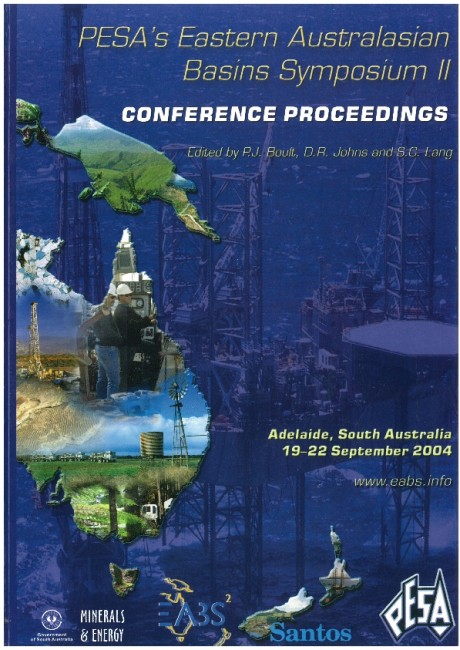Publication Name: PESA's Eastern Australasian Basin Symposium II
Authors: W-L Zang, J.B. Jago, E.M. Alexander and E. Paraschivoiu
Date Published: December 2004
Number of Pages: 31
Reference Type: Book Section
Abstract:
Cambrian sediments of the Arrowie Basin were deposited on a rifted continental margin on the southwest palaeo-Pacific part of Gondwana. Depositional regimes range from the western tectonically stable shelf, platform ramp to the eastern slope and trough-synclines. Sedimentation was strongly influenced by tectonism and at times by salt diapirism; major sequence boundaries are interpreted as due to rift, uplift and/or thrust events.Three Cambrian sequence sets E 1, E 2 and E 3, constitute the basin fill. Basal clastics of the oldest set, E 1, are overlain by carbonates ranging from an initial shelf-ramp complex to a reef-rimmed platform with slope facies, passing north to a deep marine basin. Widespread regression in the upper part of the sequence is reflected by development of evaporitic sabkhas. Set E 2 was deposited following a tectono-volcanic episode and includes redbeds, succeeded by transgressive-regressive carbonates. Set E 3 consists of fluvio-deltaic to shallow sub-littoral arkosic redbeds.
The presence of a potential petroleum system in the virtually unexplored Arrowie Basin is indicated by oil shows in the Wilkatana drillholes, gas and oil shows in Moorowie-1 and some gas shows from water bores in the eastern Arrowie Basin. Potential reservoirs include grainstones, dolomitised shelf carbonates, porous archaeocyathan reef complexes, and shelfal to slope sandstones. Total organic carbon values (TOCs) from limited core samples range up to 1.5%, indicating some source potential in shales and micritic limestone. Potential seals include anhydrite, thick regional siltstones and micritic limestone. Trap styles include anticlines, diapirs, stratigraphic plays and local thrust-wrench complexes. The main risks for petroleum exploration in the frontier Arrowie Basin include trap preservation following hydrocarbon generation during the Permian, as well as source potential.


